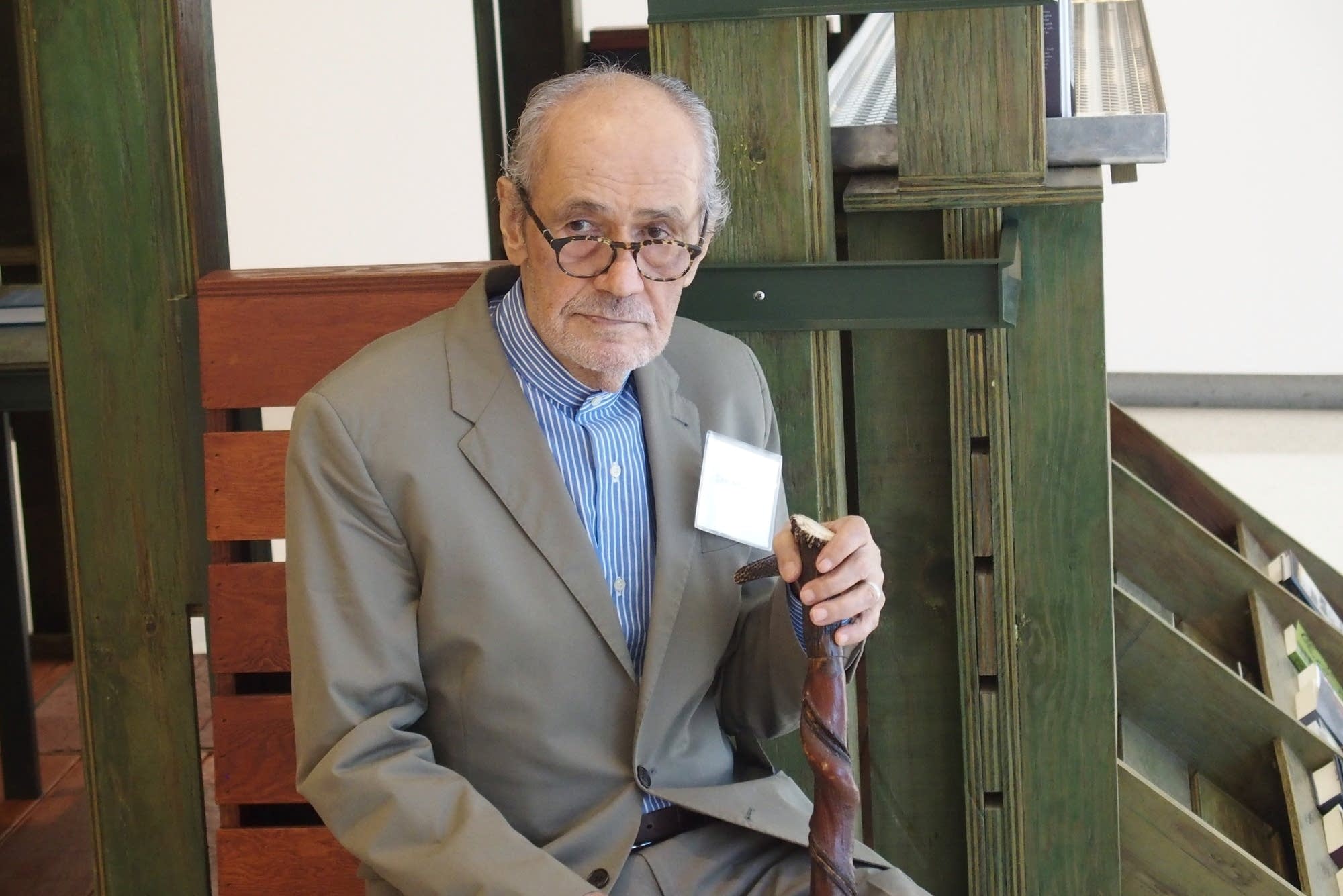Siah Armajani was an Iranian-American sculptor and architect known for his legendary works of public art. Inspired by philosophy and a longstanding commitment to political activism, Armajani’s work touched many.
His great contribution to the world has been recognised by several awards, including France’s Chevalier de L’Ordre des Arts et des Lettres and the McKnight Foundation Distinguished Artist Award. Armajani has been the subject of over 60 solo exhibitions.
His works have been featured at the prestigious Venice Biennale, the Whitney Biennial and the Skulptur Projekte Munster. But above all, Armajani’s democratic politics direct his output. He is famous for great works of public art: “Public sculpture should not intimidate, assault, or control the public. It should enhance a given place,” he says, in his manifesto Public Sculpture in the context of American Democracy.
Siah Armajani crafted, taught, and lived art
Armajani’s first well-known work is Prayer, a 70-inch canvas covered in intricately woven Farsi poetry. The Walker Art Center acquired the piece in 1962.
Armajani taught at the Minneapolis College of Art & Design from 1968 to 1974. During this time, he became friends with renowned artist Barry le Va. Le Va soon introduced him to the conceptual art of New York. Armajani would later contribute two works to the Museum of Modern Art exhibition Information in 1970.
Amongst Armajani’s most playful works is Bridge Over Tree (1970), a 91-foot walkway built over a tree. “There was a lonely evergreen tree in the landscape and I fantasized to walk from one side, go above the tree and land on the other side: to make peace… So I built that bridge in 1970 in Minneapolis,” he says. Armajani later rebuilt the work in between the Manhattan and Brooklyn Bridges, playing with the contrast between them.
 Also to his name are major works such as The Irene Hixon Whitney Bridge, a 375-foot steel bridge uniting two neighborhoods across a 16-lane highway. Armajani designed the Olympic Torch for the 1996 Summer Olympics in Atlanta, but abandoned the project. Art critic Christopher Knight named it ‘Atlanta’s Eiffel Tower.’
Also to his name are major works such as The Irene Hixon Whitney Bridge, a 375-foot steel bridge uniting two neighborhoods across a 16-lane highway. Armajani designed the Olympic Torch for the 1996 Summer Olympics in Atlanta, but abandoned the project. Art critic Christopher Knight named it ‘Atlanta’s Eiffel Tower.’

Armajani’s later work provided incisive political critique as a form of activism. His piece Fallujah (2005) is a modern take on Picasso’s seminal anti-war mural Guernica. US government censored the work for its critical stance on the War on Iraq.
Other works also include Room for Deportees (2007), which speaks out against the anti-immigrant policies that have taken over the US and Europe.
Siah Armajani left Iran for the US amidst political turmoil
Armajani was born in Tehran, Iran to a family of textile merchants in 1939. His art career began with collages publicizing his support for the secular, pro-democracy political party the National Front of Iran. When the Shah came to power in a US-backed coup, Armajani’s oppositional political activity became dangerous. At the end of his sophomore year studying philosophy at the University of Tehran, Armajani’s parents sent him to America for his protection in 1960.
He then enrolled at Macalaster College in Saint Paul, where his uncle taught, studying art and philosophy. Armajani met his future wife there, Barbara Bauer, whom he married in 1966. He subsequently became an American citizen in 1967. Saint Paul remained Armajani’s permanent residence.
One of Armajani’s first exhibited works, Letters Home (1960), displays actual letters and illustrations Armajani sent back to his family from Minnesota. With 23 feet of felt pen and paint on cloth, it’s an insight into the beginning of Armajani’s life as an exile.
Siah Armajani leaves his legacy
Armajani’s first comprehensive US retrospective, named Siah Armajani: Follow this Line, showed at the Walker Art Center from September to December 2018, and at the Met Breuer from February to June 2019. The show featured over 100 works, while spanning his illustrious six-decade long career.
In August 2020, Armajani died at the age of 81 of heart failure. The Metropolitan Museum of Art announced his death to the world: “We are deeply saddened by the passing of Siah Armajani, known for his wry humor, gentle nature, and deep conviction in the revolutionary power of art as a form of civic engagement. His social justice and political activism in Iran led to his forced emigration to the US in 1960.”
Since his death, Armajani’s work lives on and continues to have a profound effect. In fact, the Philadelphia Museum of Art recently acquired an entire room designed by Armajani, titled The Louis Khan Lecture Room.
“Siah Armajani’s legacy is much treasured and beloved at the Philadelphia Museum of Art, and we are delighted to receive the extraordinary gift of the Kahn Lecture Room into our collection,” says senior curator Carlos Basualdo.
Loved and cherished by many, Siah Armajani’s work will be remembered for generations to come.







